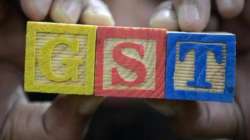GSTN develops system to fetch e-way bill data into monthly sales returns to curb evasion
Matching of invoices of e-way bills with the sales shown in GSTR-1 will help taxmen in assessing whether the supplies have been accurately shown in sales return and GST paid on the same, tax experts said.

Now, businesses supplying goods worth more than Rs 50,000 will have option to include details of e-way bills generated while filing the final monthly sales return under GSTR-1, a move aimed at curbing tax evasion by reporting different sets of supplies data.
Matching of invoices of e-way bills with the sales shown in GSTR-1 will help taxmen in assessing whether the supplies have been accurately shown in sales return and GST paid on the same, tax experts said.
"To avoid double data entry, GSTN has provided a facility to taxpayers, where month's e-way bill data is shown in format, which is required by a taxpayer to fill up the Form GSTR-1. The taxpayer can import data in his GSTR-1 form or import the same and use it with GSTR-1 offline tool to create his GSTR-1 Return Form," GST Network said.
Touted as an anti-evasion measure, e-way bill system was rolled out on April 1, 2018, for moving goods worth over Rs 50,000 from one state to another. The same for intra or within the state movement was rolled out in a phased manner from April 15, 2018.
Following this, it has come to investigative officers' notice that some transporters are doing multiple trips by generating only a single e-way bill or not reflecting e-way bill invoices while filing GSTR-1. It has also come to the notice that certain e-way bill is not being generated even as supplies are being made.
While generating e-way bill, details of supplier, receiver and other invoice details like number, date, goods, quantity, HSN code etc are provided by the taxpayer on e-way Bill Portal. This data is now transferred to GST portal, GSTN, which has developed the technology backbone for Goods and Services Tax (GST), said.
"With this facility, taxpayer will not be required to enter data in his Form GSTR-1 for all invoices for which he has generated e-way bill. This will avoid double data entry by taxpayers. This facility will help taxpayer to fill up their Form GSTR-1 in less time. This will also avoid any data entry mistakes made while filling details,” GSTN Chief Executive Prakash Kumar said.
GSTN said it has divided the taxpayers into three categories to download /import the data into GSTR-1. In last 18 months, around 90 per cent of taxpayers have reported up to 50 B2B and B2C large invoices in a month.
"Since these invoices can be easily seen on the screen, facility to import the data directly into GSTR-1 has been provided for such taxpayers. These taxpayers can edit the details imported in GSTR-1, if required, and then file their Form GSTR 1 online after adding other details like B2C supplies," GSTN said.
For those having more than 50 invoices but up to 500, have been provided facility to download the data in a prescribed 'csv' file format, which can then be imported into GSTR 1 offline tool.
In case the number of invoices is more than 500, the invoice details can be imported from return Dashboard on GST portal as a 'zip' file. Tax payer can add more invoices (like those below Rs 50,000 in value) and upload in offline tool to prepare his/her return.
Linking of e-way bill data with GSTR-1 would help taxmen keep a tab on whether the supplies shown in e-way bill matches the sales shown in the returns form and thereby check evasion.
AMRG & Associates Partner Rajat Mohan said: "This facility would add to the immediate convenience of taxpayers, however, it would also prove to be a swift method of checking tax collections and any probable evasion.
"Once the system is stabilized, GSTN would have automated and regular reports of e-way bills transaction, which were not captured while filing outward supplies in GSTR-1".